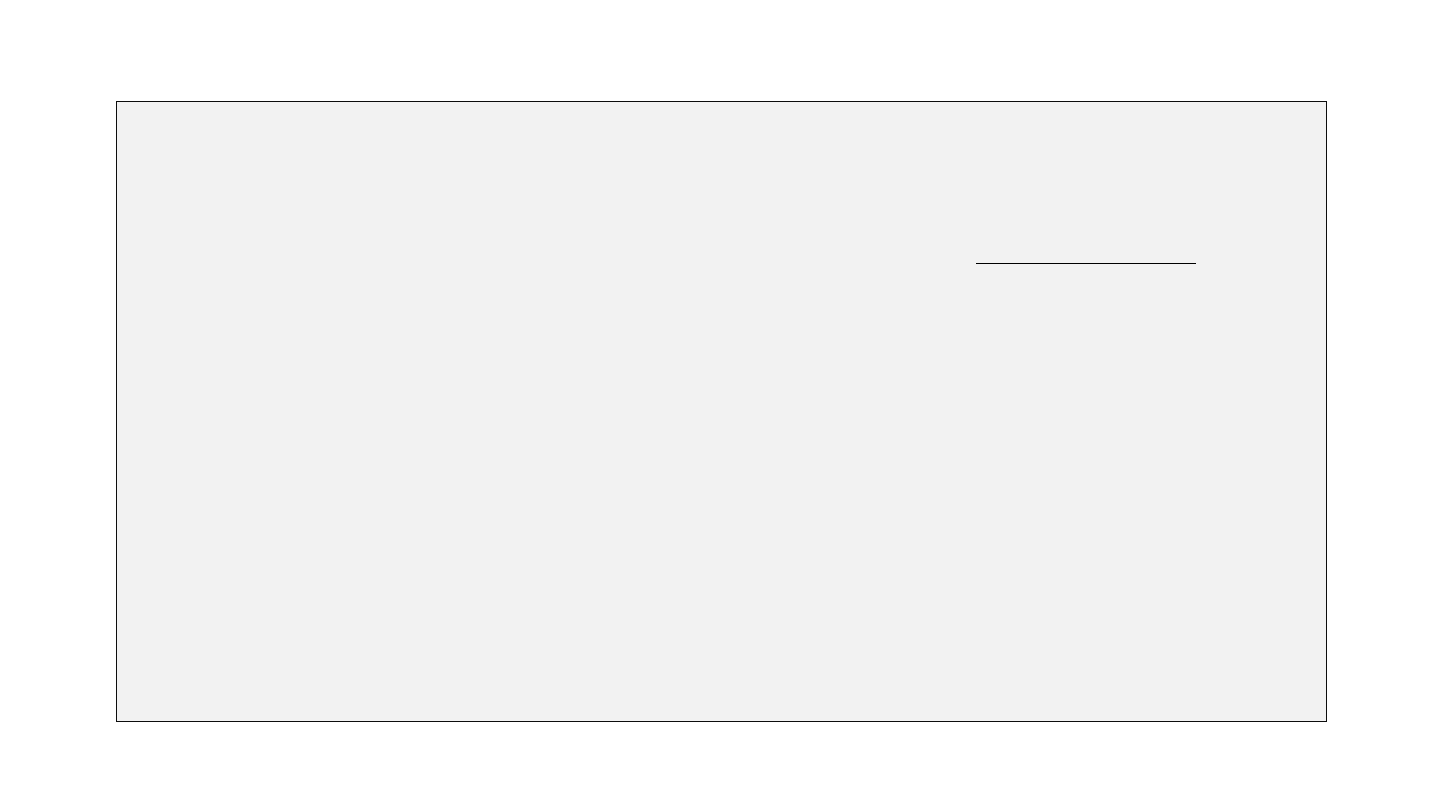
⑦ A source of evidence that children learn language by formulating a set of rules
comes from errors that they produce: a case in point are past tense forms like
comed, goed, seed, buyed, bringed, etc., frequently used by young children.
Such forms cannot have been learned by imitation of adult speech, since
they
do not occur in adult speech (instead we find came, went, saw, bought,
brought).
So how is it that children produce such forms? The obvious answer is that, on the
basis of pairs such as loved, closed, used, etc., the child formulates for himself a
rule to the effect that ‘You form the past tense by adding –(e)d to the stem of the
verb’; the rule is then overgeneralized to ‘irregular’ verbs like come, go, see, buy,
bring, etc.
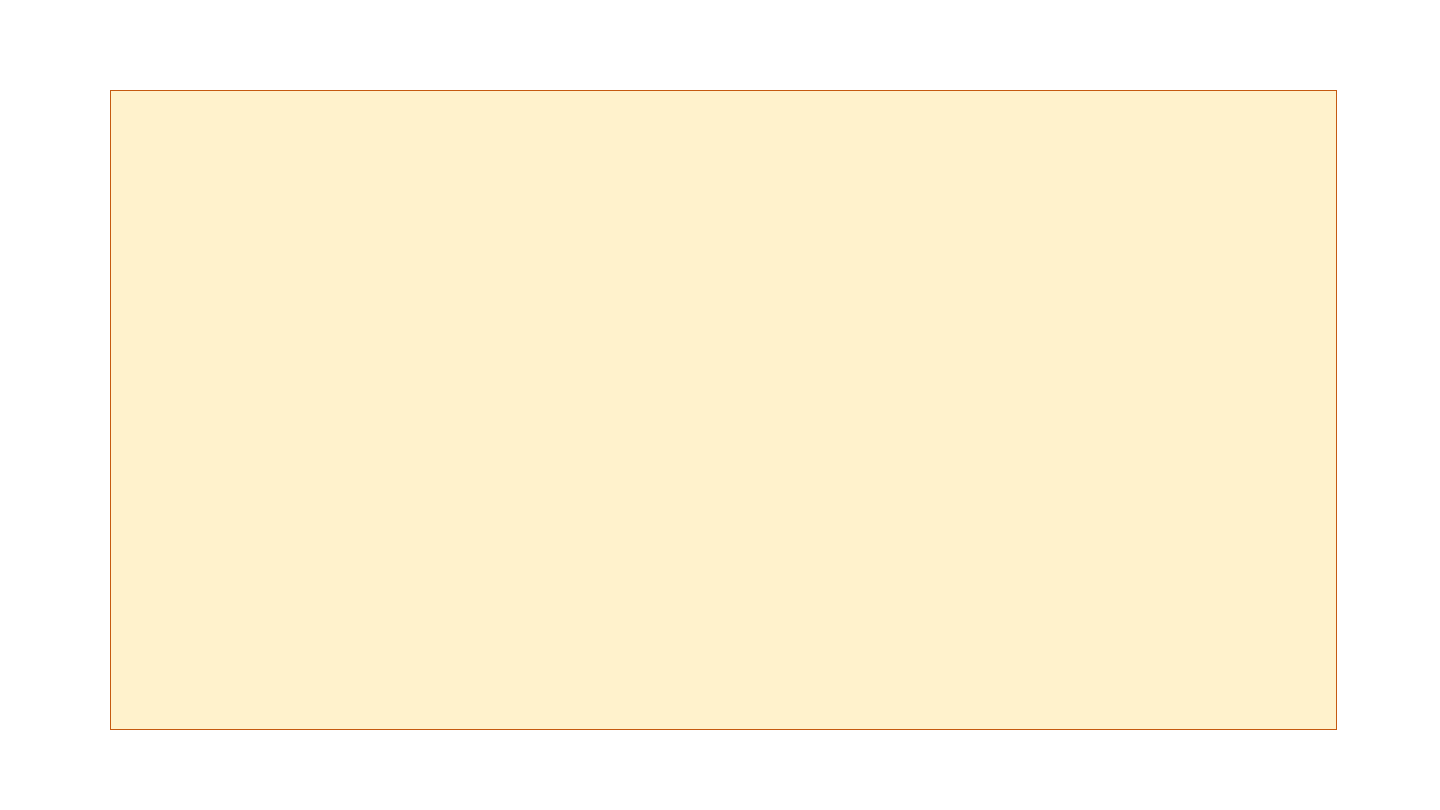
⑧ Rule-governed formation occurs when children learn morphology by
constructing for a set of morphological rules.
Akmajian and Heny(Principles(1975), p.17) report one group of American children observed
producing direct yes-no question:
(19) (a) Is I can do that?
(b) Is you should eat the apple?
(c) Is Ben did go?
Clearly, no adult English speaker would produce sentences like (19). However,
children come to produce them on the basis of the sentences such as:
(20) (a) Is daddy staying out again tonight?
(b) Is mummy getting dinner ready?
=> Children formulate for themselves a rule to the effect that ‘You form a ques-
tion
by putting is as the first word in the sentence.’ Of course, the rule is ‘wrong’.
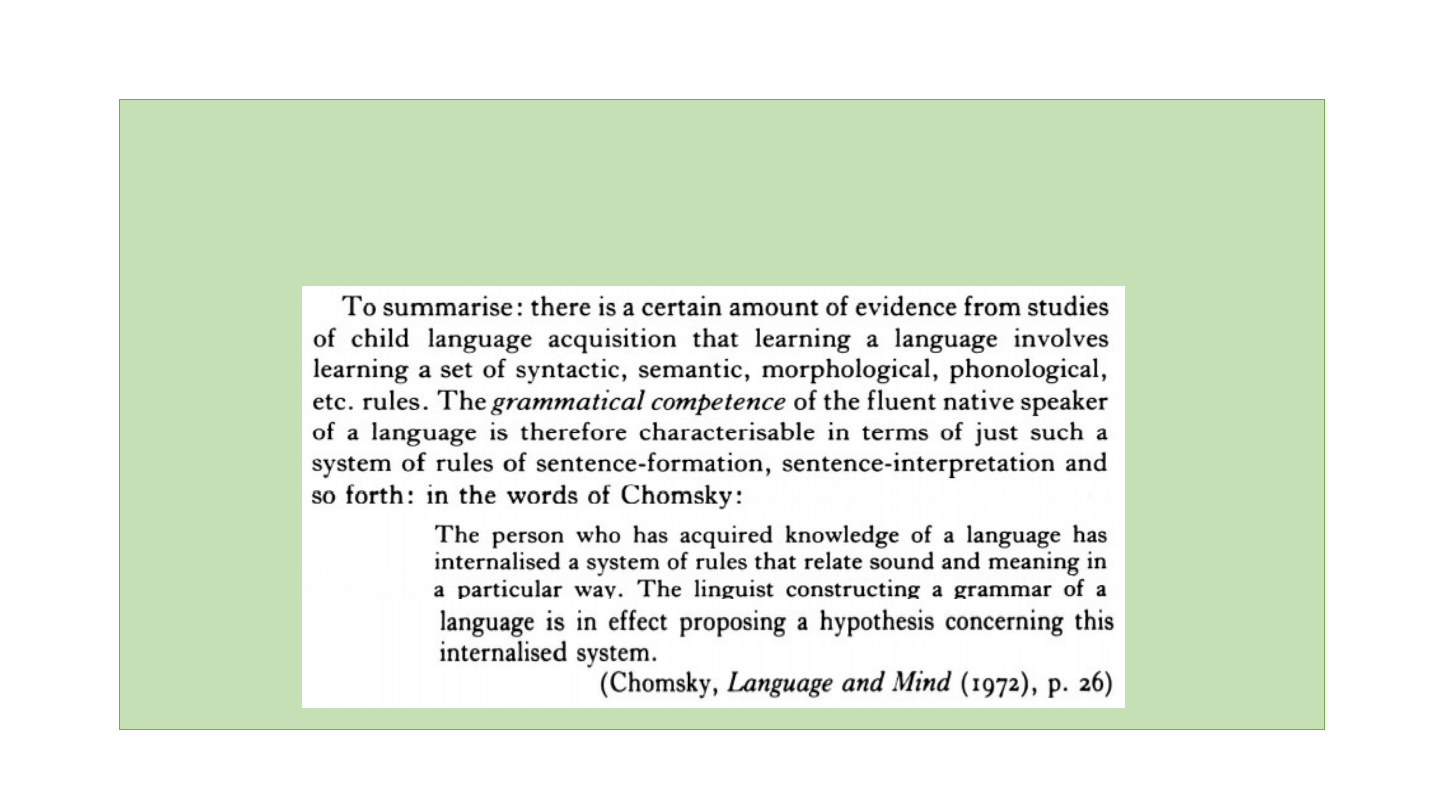
=> Therefore, these data provide strong evidence that learning a language
does indeed involve learning a set of linguistic rules ━ and hence that
language is indeed rule-governed.

7. Formulating hypotheses for rule formation
Consider what principle or rule might be needed to account for a particular phenomenon.
Linguists like to intellectualise their work by talking about formulating hypotheses.
For example, the definition of Syntax and Semantics in the case of reflexive pronoun
would be:
Syntax: specifies the positions in a sentence in which reflexive pronouns can occur
Semantics: specifies which expressions in a sentence a given reflexive pronoun can be
interpreted as referring to (i.e. specifies the range of possible antecedents
for a reflexive pronoun)
(28) She₁ never talks to us₂ about herself₁.
=> The expression that herself refers to she ━ the antecedent can be she.
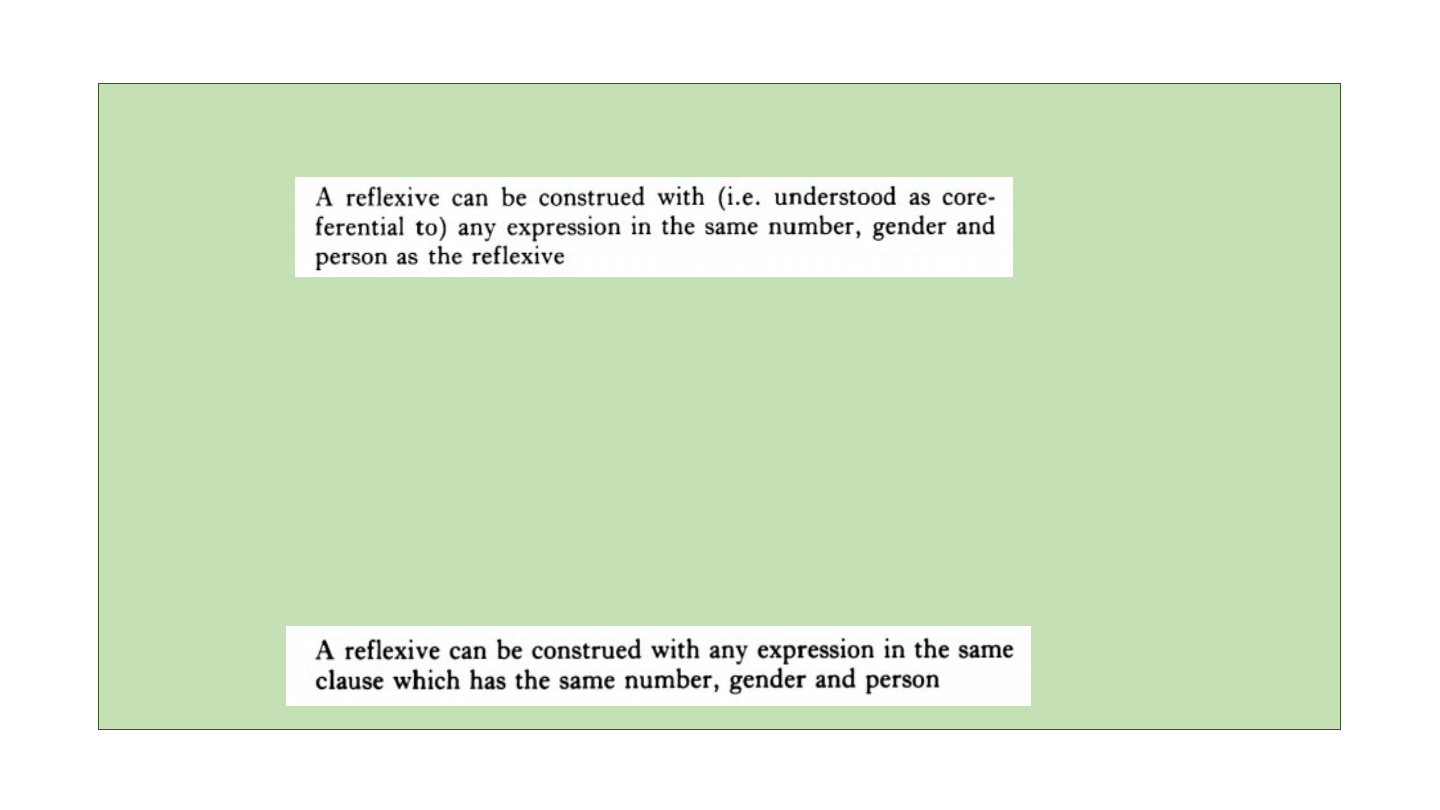
1st hypothesis for Reflexive Interpretation Rule about (28):
(32) John₂ thinks that Fred₁ hates himself₁.
=> Depending on the 1st hypothesis, a reflexive himself in (32) can be construed
with John and Fred in the same number, gender and person as the reflexive.
However, Fred and himself are both parts of the hates-clasuse, whereas John
and belongs to a different clause, the thinks-clause. In view of this, the Reflexive
Interpretation Rule is needed to be reformulated.
2nd hypothesis for Reflexive Interpretation Rule about (32):
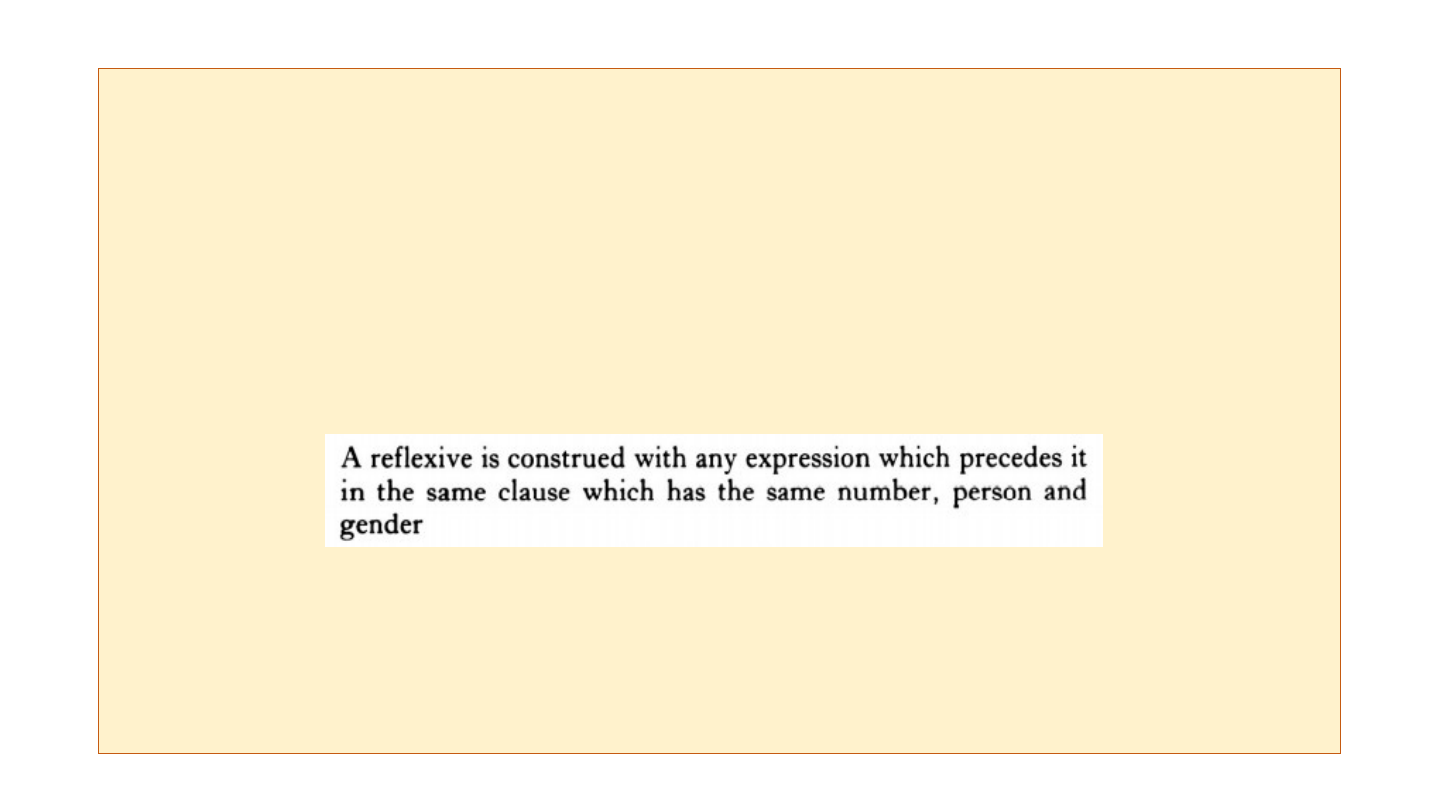
(34) John₁ never talks to himself₁ about Fred₂.
=> Depending on the 2nd hypothesis, himself can be construed with John and Fred
in the same clause. But in this case (34), himself can be only coreferential to John,
not to Fred because John precedes the reflexive, and Fred follows it.
So reflexives in general require to preceding expression to refer to.
3rd hypothesis for Reflexive Interpretation Rule about (34):
=> In conclusion, the processes of the formulating hypotheses result in final
rule
formation in syntactic structures. The adequate Reflexive Interpretation
Rule is
determined by the 3rd hypothesis.